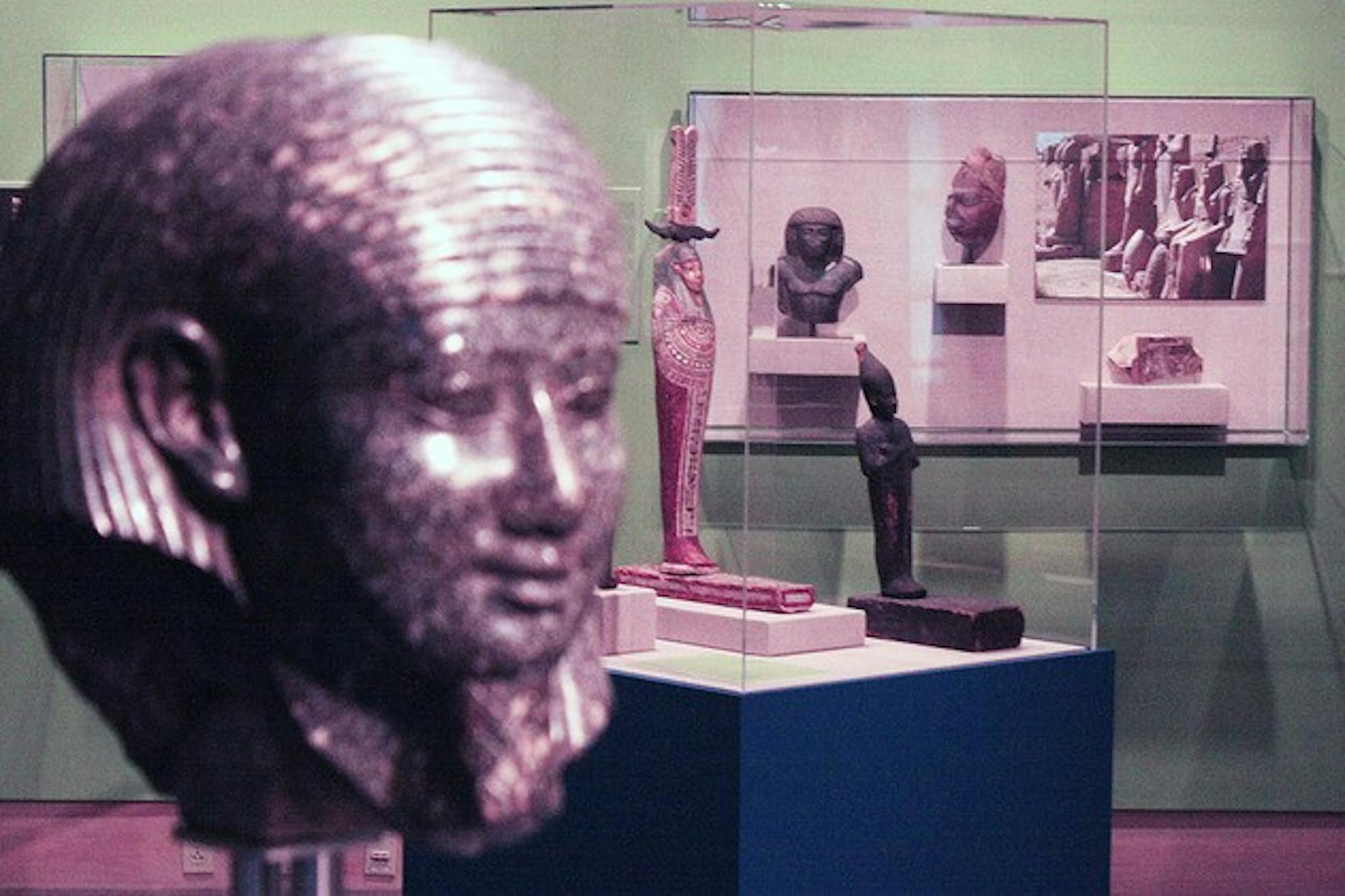After working as the head of the Metropolitan Museum of Art's Department of Egyptian Art in New York, Lilyquist moved to her cozy home in Chelsea, Vt., to join the staff of the Hood with the goal of studying the museum's collection of Egyptian objects. Prior to Lilyquist's arrival, Dartmouth's Egyptian artifacts were kept primarily in storage, she said.
"The Hood had never had an Egyptologist work with the collection," Lilyquist said. "Occasionally, a professor brought classes down into the storeroom to look at the objects. The Hood didn't want to be showing artifacts that were fake, so they asked me to come in and do a quick run through."
Lilyquist said she was intrigued by the museum's collection, so she offered to catalog the stored artifacts. She, along with Lila Acheson Wallace, research curator in Egyptology, and several of the museums' administrators, then came up with the idea to display the pieces in a formal exhibit for the Dartmouth community to enjoy.
"I definitely wanted to be involved with the academic community at Dartmouth," Lilyquist said.
When Lilyquist assembled the exhibition, she aimed to organize the objects by theme. For example, one section of the gallery is devoted to the various amulets worn by ancient Egyptians.
"Each amulet had a different purpose to each Egyptian," she said. "When they wore them, they meant that the deity portrayed would help you and come to your aid to solve your problems."
Another part of the exhibit showcases the museum's collection of tomb items, which date back to the Middle Kingdom, which spanned the 21st through 17th centuries B.C. Among the items on display are an offering tray, which contained sacrificial items for the gods from the family of the deceased, and a funerary cone, a small clay cone inscribed with the title and name of the tomb owner that was placed over the entrance of the chapel of the tomb.
The exhibition also contains many votive objects from various Egyptian temples. Egyptian people participated in the life of a temple by depositing offerings to various deities, according to Lilyquist. One of the offerings, for example, is a statuette that shows the goddess Isis suckling the child and future pharaoh Horus. Egyptians also dedicated mummified human remains to the deities, according to Lilyquist.
Most of Dartmouth's acquisitions were gifts from alumni or friends of Dartmouth, but the remainder were purchased by the College from various museums in England, according to Lilyquist. Dartmouth acquired many objects unearthed during English archaeologist William Flinders Petrie's excavations, she said.
Last Wednesday, Lilyquist delivered a lecture at the Hood Museum that credited the collectors, scholars and "ordinary folk" who played a role in the acquisition of important artifacts in the Hood's collection. One such object is a magnificent head of a deity, given by the family of former U.S. Vice President Nelson Rockefeller '30. Senator Nelson William Aldrich, the maternal grandfather of Rockefeller, was the head's original buyer, according to the collection record in the Rockefeller Family archives.
In her talk, titled "Causing Their Names to Live: Collectors, Scholars, Dealers, Tourists and the Hood's Egyptian Objects," Lilyquist told the story of Aldrich, who was close friends with banker John Pierpont Morgan. The two shared a love of art Morgan was on the board of directors at the Met, and Aldrich quickly began to share Morgan's enthusiasm for Egypt. Morgan often took his friends on expeditions on the Nile River, which were encouraged by Albert Lythgoe, the first curator of Egyptian art at the Met, Lilyquist said. The head was purchased on one such trip and then passed from generation to generation within the Rockefeller family until its donation to the Hood Museum in 1999, according to Lilyquist.
Lilyquist also discussed the history of a mummified fish, which was presented as an offering in an Egyptian temple. In 1944, two brothers from Alexandria wrote to then-College President Ernest Martin Hopkins to ask if he would like to buy an embalmed fish from sometime between the fifth century B.C. and the fourth century A.D, she said. The following April, Hopkins offered to pay just $25 for the fish, and it was officially gifted to the Hood in 1945.
Although removing these artifacts from Africa may not be the most authentic way to display them, there is still much that can be learned from Dartmouth's Egypt collection, Lilyquist said.
"I would have loved everything to stay in Egypt and for all the sand to be cleared away and for monuments to be reconstructed and preserved, but that certainly isn't the reality of things," Lilyquist said. "I do think that in teaching collections and larger public institutions, there is a definite role that museum curators generally take very seriously of trying to teach from these objects. Still, these artifacts would have a totally different impact if seen in their natural environment. We miss all of that by going into the museum, but we are bound to examine the object much more closely this way."




